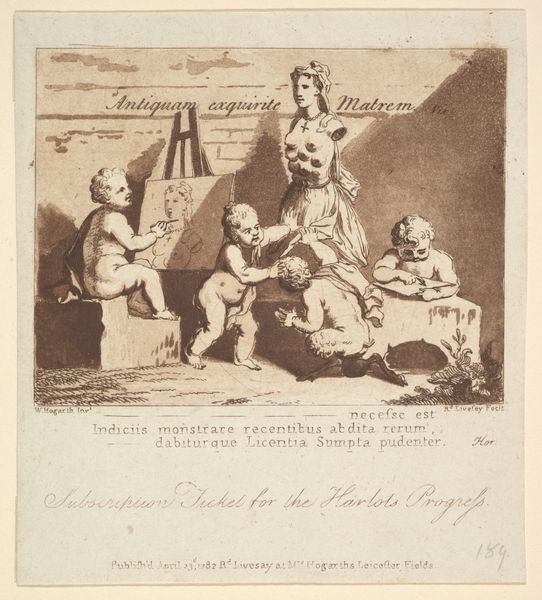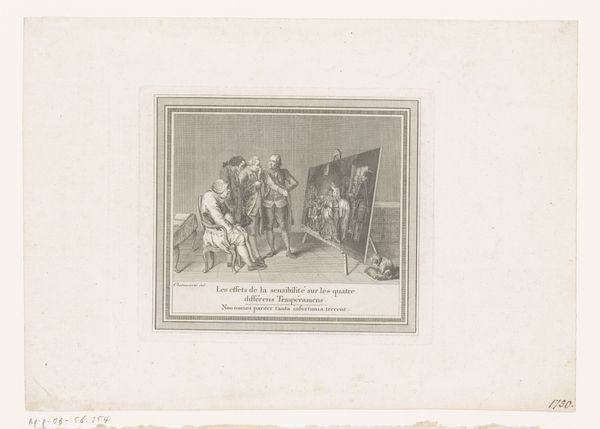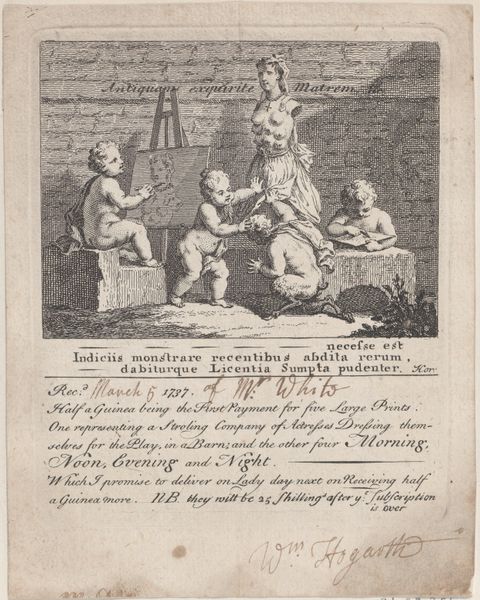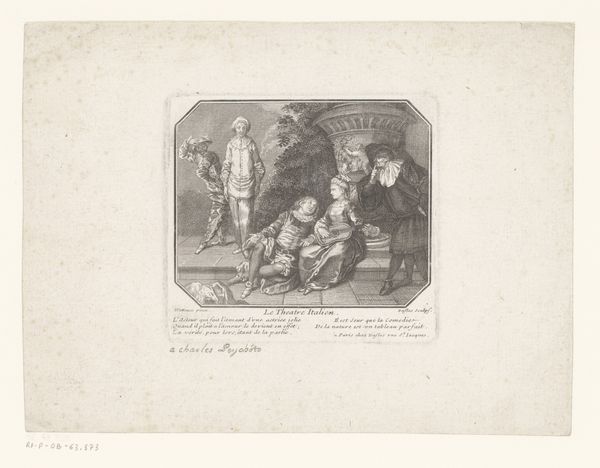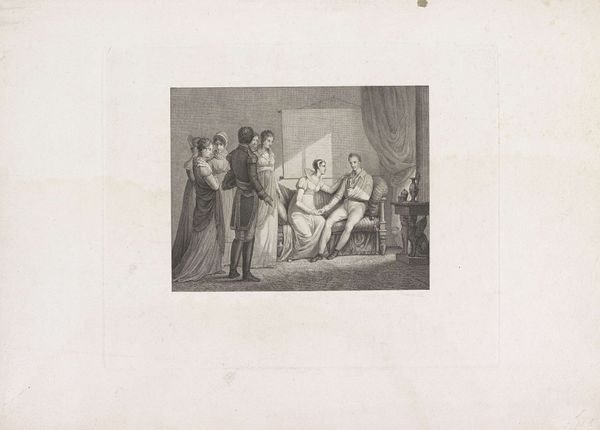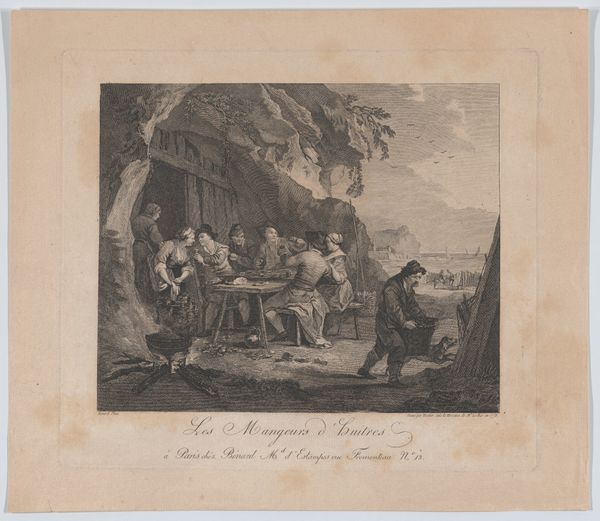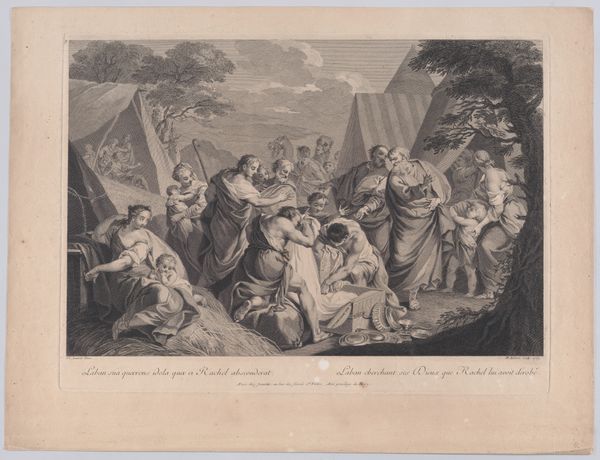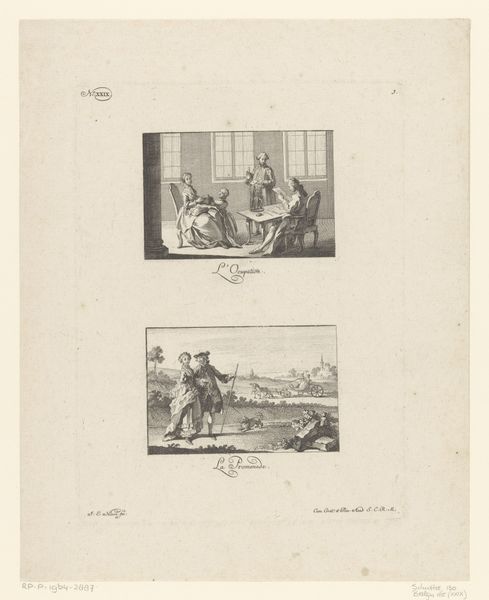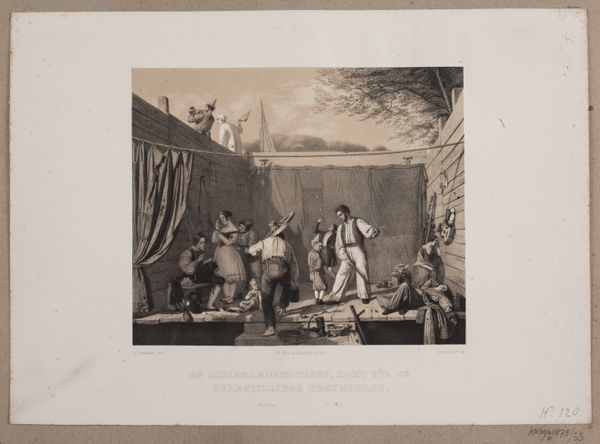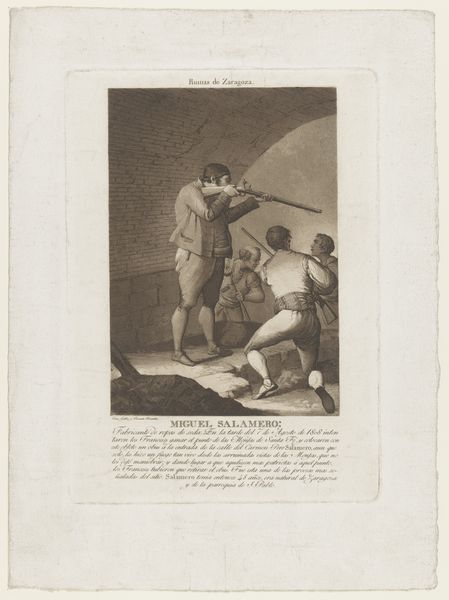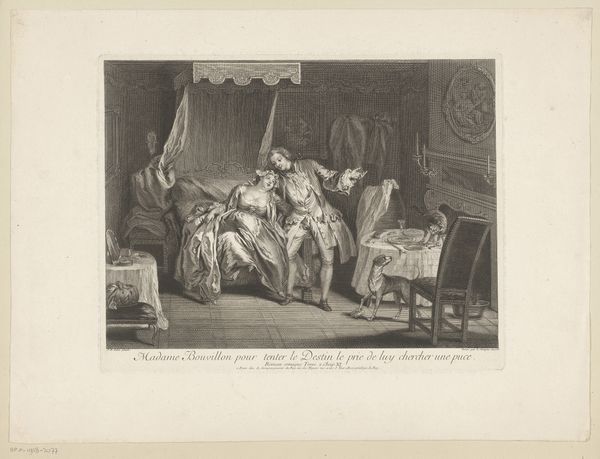
drawing, print, ink, sculpture, engraving
#
drawing
# print
#
pencil sketch
#
ink
#
ink drawing experimentation
#
sculpture
#
pen work
#
history-painting
#
academic-art
#
engraving
Dimensions: plate: 5 1/2 x 5 5/16 in. (14 x 13.5 cm) sheet: 5 11/16 x 6 7/16 in. (14.4 x 16.4 cm)
Copyright: Public Domain
Curator: Richard Livesay's engraving, "Boys Peeping at Nature," dates back to 1782 and is currently held at the Metropolitan Museum of Art. What strikes you first about it? Editor: The composition is curious—slightly unsettling. It feels like a commentary on artistic practice itself. There’s a crudeness in the rendering, a starkness in the line work, and an air of forced allegory. Curator: That's interesting, especially considering the piece is an engraving, a printmaking technique reliant on a meticulous process. Think about the materials—the metal plate, the tools used to incise the lines, the paper on which it's printed, and the intended purpose. This was a subscription ticket for a series by Hogarth, after all; a product aimed at a specific consuming public. Editor: Exactly. The subject matter becomes really significant when thinking about who had access to see the work and the implications of reproducing art through printing and mass consumption. Here we have cherubic figures, cupids perhaps, actively engaged with artmaking, or disrupting it in the image’s center. They appear to be referencing the very making of art and playing with it—revealing some secrets but obscuring others. How subversive could it be when tied into something such as a series of art as a public service to provide moral lessons and what roles and boundaries should the people assume in those art processes? Curator: And note how that fits into the 18th-century art world. The production of engravings like this one was integral to disseminating visual culture beyond the elite. Engravings brought art, often moralizing narratives as seen with Hogarth, into the homes of a growing middle class. These printed images fostered broader dialogues regarding societal norms and values. Editor: The very choice of putting the cherubs interacting with sculpture and drawings questions the roles of skill and labor behind art that can speak of moral rectitude when in reality its modes of dissemination rely on popular commercial structures. There are power dynamics inherent in both who gets to be represented in artwork and how they are seen in artwork when so many eyes have access to its images. Curator: Considering Livesay’s engraving as a physical object produced within specific social conditions helps demystify the concept of "art" itself. The artistic labor embedded in the plate itself— the etching and design and the many reproduced pieces become a commodity. Editor: I think examining its original function complicates it even further, moving it beyond merely aesthetic evaluation and situating it firmly within its social context, while we’re peeping in its artwork historical moment! Curator: Yes. I feel better acquainted with this "ticket."
Comments
No comments
Be the first to comment and join the conversation on the ultimate creative platform.
